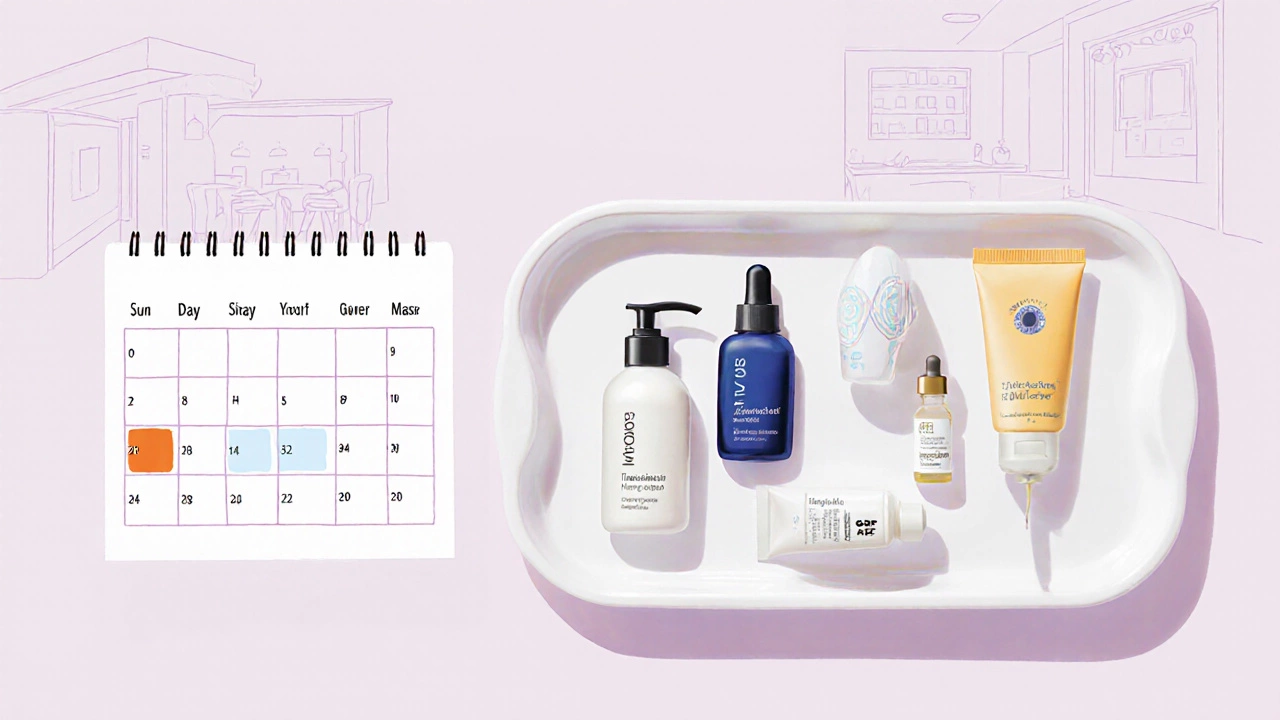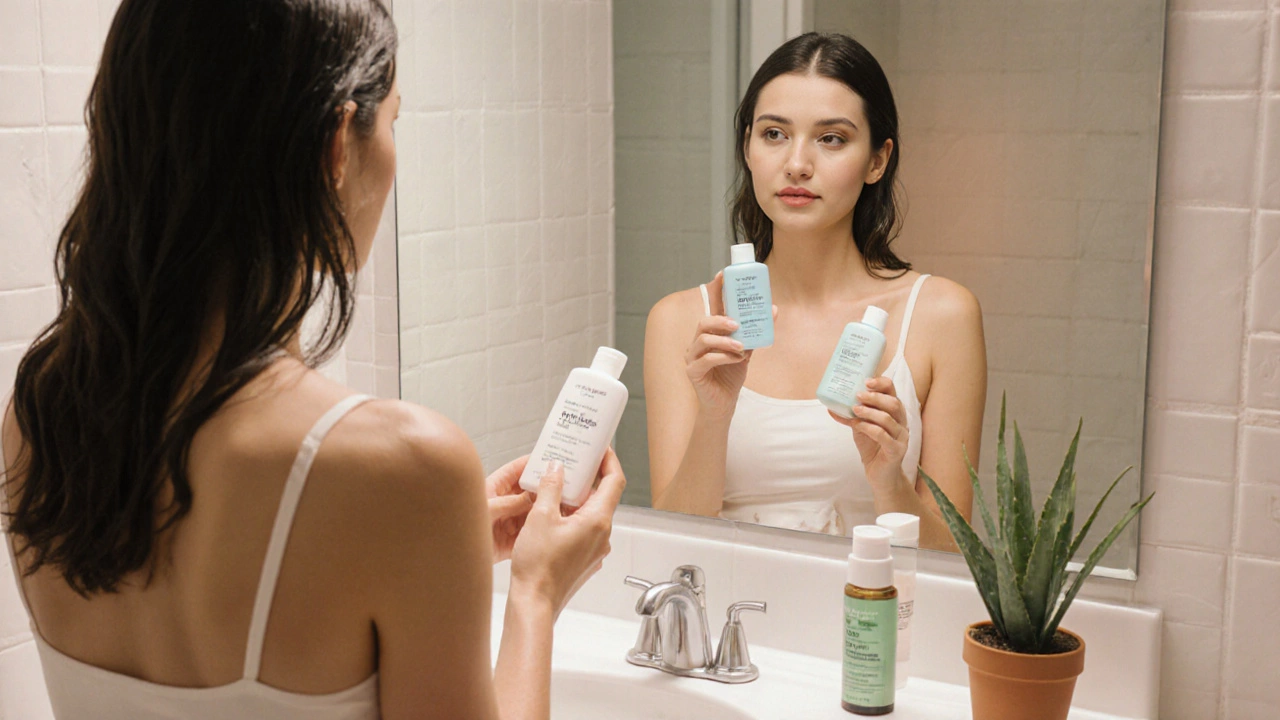Skin Type Identification Tool
Know Your Skin Type
This tool helps you identify your skin type based on key characteristics. Your skin type determines which products and treatments will work best for you.
Your Skin Type
Personalized Recommendations
How to Incorporate This into Your Routine
When you look at the mirror each morning, the first question is usually: "What should I do to keep my skin clear and fresh?" The answer lies in a handful of core practices that most dermatologists agree form the foundation of healthy skin. Below we break down the essential skincare treatments you can start using today, explain why each step matters, and give you a simple checklist to turn the theory into habit.
1. Know Your Skin Type
Before you pick any product, identify whether your skin is oily, dry, combination, or sensitive. Skin type is the natural condition of your epidermis that determines how much oil, moisture, and barrier protection it needs. Understanding your skin type helps you tailor each treatment so it works, not irritates. A quick test: after washing your face, wait an hour and see which areas feel tight (dry) or shiny (oily). Adjust the routine you’ll build in the next sections accordingly.
2. Cleansing - The First Line of Defense
Cleansing is the process of removing dirt, oil, makeup, and pollutants from the skin surface. Use a gentle cleanser that matches your skin type - a gel‑based formula for oily skin, a cream‑based one for dry skin. Wash twice a day: once in the morning to clear nighttime sweat, and once at night to dissolve makeup and sunscreen. Avoid hot water; lukewarm temperature preserves the skin’s natural oils.
3. Exfoliation - Saying Goodbye to Dead Cells
Exfoliation smooths the skin by removing the top layer of dead skin cells. There are two main approaches:
| Method | Typical Ingredients | Benefits | Potential Risks |
|---|---|---|---|
| Physical | Micro‑beads, sugar granules, apricot shells | Immediate smoothness, easy visual cue | Micro‑tears if used aggressively, not ideal for sensitive skin |
| Chemical | AHA (glycolic, lactic), BHA (salicylic) | Deep pore cleaning, promotes collagen, suitable for acne‑prone skin | Possible redness, requires sun protection afterward |
For beginners, start with a 5% AHA serum twice a week, or a gentle scrub with rounded particles once a week. Always follow with moisturization and sunscreen.

4. Moisturizing - Locking In Hydration
Moisturizing replenishes the skin’s barrier and prevents transepidermal water loss. Choose a formulation based on your skin type:
- Oily skin: lightweight, oil‑free gel or lotion.
- Dry skin: richer cream containing ceramides and hyaluronic acid.
- Sensitive skin: fragrance‑free, hypoallergenic balms.
Apply moisturizer while your skin is still slightly damp from cleansing or exfoliation to seal in maximum moisture. For daytime, pick a moisturizer with added antioxidants; for night, look for ingredients like niacinamide that support repair.
5. Sun Protection - The Non‑Negotiable Step
Sun protection shields the skin from UVA and UVB rays that cause premature aging and skin cancer. Even on cloudy days, UV rays penetrate. Use a broad‑spectrum SPF 30 or higher every morning, and re‑apply every two hours if you’re outdoors. If you wear makeup, opt for tinted moisturizers or foundations with built‑in SPF for easier layering.
6. Targeted Treatments - Tackling Specific Concerns
Once your basic routine is solid, you can add focused products:
- Acne treatment often contains benzoyl peroxide, salicylic acid, or tea tree oil to reduce breakouts.
- Anti‑aging serum typically packed with retinol, peptides, or vitamin C to boost collagen and brighten skin.
Apply these after cleansing and before moisturizer. Start with a low concentration (e.g., 0.5% retinol) to gauge tolerance, and increase gradually.

7. Professional Procedures - When at‑Home Care Needs a Boost
For stubborn texture or pigmentation, a dermatologist may recommend in‑office treatments:
- Chemical peel uses a controlled acid solution to remove deeper layers of dead skin. Ideal for fine lines, dark spots, and acne scars.
- Microdermabrasion mechanically sands the skin’s surface, stimulating new cell growth. Best for uneven texture and mild hyperpigmentation.
Both procedures require post‑treatment sun avoidance and a soothing moisturizer for a few days. They’re powerful upgrades but not replacements for daily cleansing, exfoliation, and sunscreen.
8. Building Your Simple Routine - A Quick Checklist
- Morning: Cleanser → Antioxidant serum (optional) → Moisturizer with SPF.
- Evening: Cleanser → Exfoliant (2‑3×/week) → Targeted treatment (acne or anti‑aging) → Night‑time moisturizer.
- Weekly: Physical scrub (once) or chemical peel (once‑every‑2‑weeks) → Hydrating mask.
- Monthly: Professional service (if needed) → Review product tolerance and adjust concentrations.
Stick to the schedule for at least four weeks before judging results. Skin renews roughly every 28 days, so consistency is key.
Frequently Asked Questions
How often should I exfoliate?
For most skin types, 2‑3 times per week is enough. Sensitive skin may only need once a week, while oily or acne‑prone skin can handle three times.
Can I skip moisturizer if I have oily skin?
No. Even oily skin loses moisture and can over‑produce oil when it’s dehydrated. Choose a lightweight, gel‑based moisturizer to keep the barrier intact.
Is sunscreen really necessary on rainy days?
Absolutely. Up to 80% of UV rays can pass through clouds, and indoor windows also let UVA through. Daily SPF protects against cumulative damage.
When should I consider a chemical peel?
If you have persistent hyperpigmentation, fine lines, or acne scarring that doesn’t improve after 8‑12 weeks of a solid at‑home routine, a dermatologist‑guided peel can accelerate results.
Do I need both a cleanser and a makeup remover?
If you wear full‑coverage makeup, a two‑step approach-oil‑based remover followed by a gentle cleanser-ensures all residue is gone without stripping the skin.
